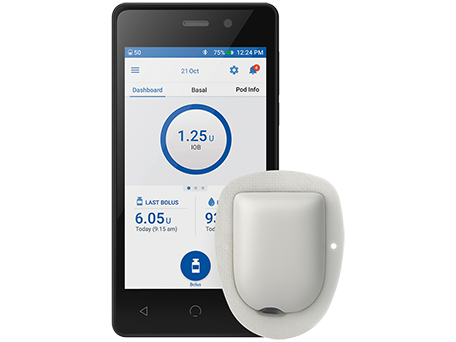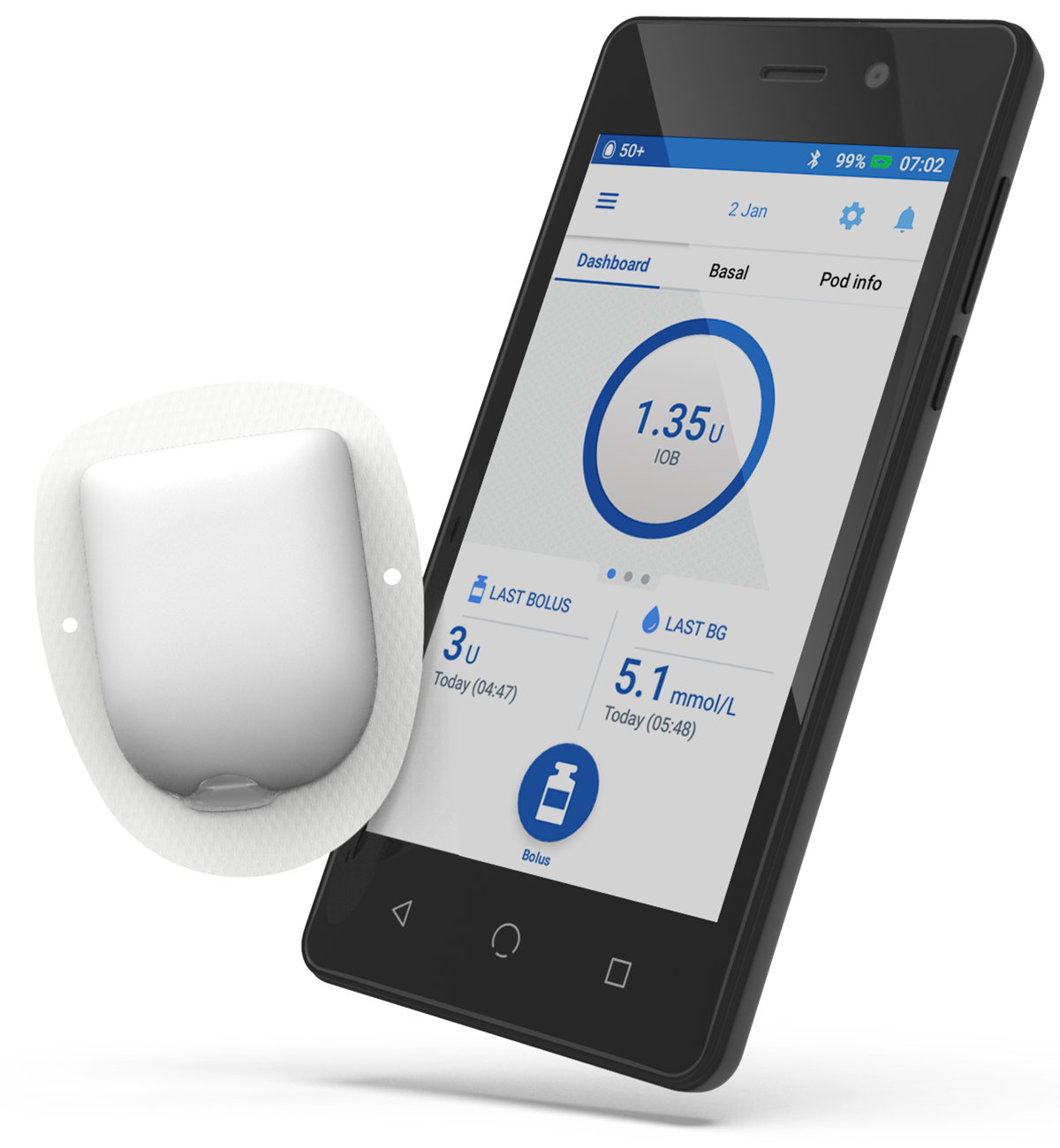The Omnipod DASH® Insulin management System
Simplify insulin delivery with Pod Therapy
Pod therapy may help simplify Type 1 Diabetes (T1D) management for your patients, by providing an alternative to both Multiple Daily Injections (MDIs) and tubed pumps.
The Omnipod DASH® System consists of two parts, a small, tubeless and waterproof* Pod, which is controlled by a smartphone-like Personal Diabetes Manager (PDM).1 The Omnipod DASH® System is associated with a positive impact on T1D patients’ overall well-being and Quality of Life (QoL).2,3

§Up to 72 hours of continuous insulin delivery.
What is the Omnipod DASH® System?
View this short video to find out more about Pod Therapy and learn how the Omnipod DASH® System could benefit your patients.
How might you simplify life for your patients?
With the Omnipod DASH® System, patients could experience the freedom from multiple daily injections. Continuous subcutaneous insulin infusion (CSII) therapy can help support improved glycaemic control4,5 and may enhance patient QoL2,3 with greater flexibility in insulin delivery and reduced variability of glucose levels.6


Patients can control basal and bolus insulin delivery with the lightweight PDM1
The smartphone-like Personal Diabetes Manager (PDM) provides patients with an intuitive user experience. Coupled with Bluetooth®* technology, patients can remotely† and discreetly5 manage their insulin delivery, based on their activity level and meals of choice.1
† 'At start-up, the Pod and Personal Diabetes Manager must be adjacent and touching. During normal operation, the Personal Diabetes Manager must be within 1.5 meters
(5 feet) of the Pod'
Consolidating patient diabetes data
Insulet, partnering with Glooko®, allows you to manage your patients’ progress in-clinic and from afar, by staying continuously engaged through Remote Patient Monitoring (RPM)
Clinically demonstrated to support patients with T1D4,6,7
Multiple real-world studies of people with T1D have demonstrated that the Omnipod DASH® System is associated with improved glycaemic control.4,7
The Omnipod DASH® System may help simplify T1D management for all ages and lifestyles8,9
The Omnipod DASH® System was designed to help simplify T1D management, from parents learning how to support their child’s needs, to adults who want freedom from MDI.
Arrange a meeting with an Omnipod® representative
If you have questions about Omnipod® products, our team is available to provide you with the information you need and help you to determine which of your patients could best benefit from the Omnipod DASH® System.
Be the first to know
Stay up to date and be in the know when it comes to all things Insulet. By signing up for our mailing list, you will be in the know when it comes to training and events, Omnipod® published data and first-hand experiences from Podders®.
All screen images are examples and are for illustrative purposes only.
References: 1. Omnipod DASH® Insulin Management System [User Guide]. 2019. 2. Polonsky WH, et al. Diabetes Technol Ther. 2016;18(10):664-670. 3. Insulet Customer Satisfaction Survey. Data on file. 2018. 4. Mehta AN, et al. Clinical Diabetes. 2021. 5. Brown R.E. et al. Diabet Med. 2020 Oct 11:e14420. Advance online publication. 6. Beck RW, et al. Lancet Diabetes Endocrinol. 2017;5(9):700-708. 7. Biester T, et al. Diabetes Technol Ther. 2021 8. Layne JE, et al. J Diabetes Sci Technol. 2016. 10(5):1130-5. 9. Danne T, et al. Pediatr Diabetes. 2018 Aug;19(5):979-984.